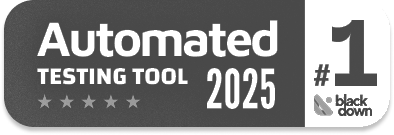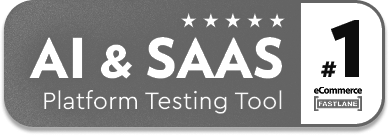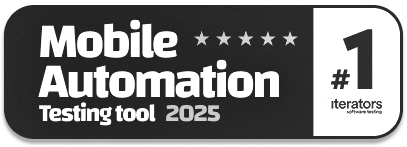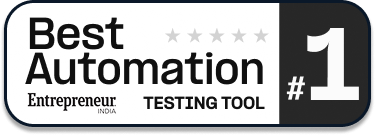SDET in a Startup vs. MNC: A Reality Check
|
|
Today, a Software Development Engineer in Test (SDET) is integral to producing high-quality, efficient code with the least possible time to market. With agile practices, continuous delivery, and automation being the norm within the industry, SDETs are now straddling the line between development and QA. However, the SDET role is not monolithic; it transforms radically according to where you work: a nimble start-up or a massive multinational corporation (MNC).
Key Takeaways
- Startups have unpredictable workloads and tight deadlines, while MNCs offer structured and stable work environments.
- Learning in startups is fast and hands-on, whereas MNCs provide formal training and career development plans.
- SDETs in startups own the entire testing lifecycle, while MNC roles are more specialized with shared responsibilities.
- Communication in startups is informal and quick, while MNCs rely on formal processes and tools.
- Startups offer high risk with potential high rewards, while MNCs ensure job security and consistent compensation.
Foundational Differences: The Ground You Stand On
Before looking into the role of an SDET at a startup vs an MNC, it is important to first take into consideration the underlying contrasts that inform everything from work culture to daily tasks. These are the basics that set the stage for an SDET to exist, to grow, or to become complacent. It’s the ground you stand on, and it affects your tooling and workflows, as well as how you accelerate or burn out in your career. Read: SDET Interview Questions: Your Key to Landing the Job.
Startups: Jack of All Trades
Startups are vibrant epicenters of innovation where experimentation, pace, and agility are the norm. With resource-constrained teams and fast development cycles, the only objective is to ship ideas fast and test them live. In such rapidly changing landscapes, an SDET is not just a test engineer but often a jack-of-all-trades scientist, setting up CI/CD pipelines, developing automation frameworks, devising test strategies, sometimes even writing production code when the project demands it. The borders of responsibilities are indeed fuzzy, which is why being versatile and proactive is key to finding success.
Startups thrive on:
- Agility and Speed: Startups exist in a fast-paced economy that demands quick delivery to remain competitive in the marketplace. This adaptability enables SDETs to ship and iterate quickly, update their test strategies on the fly, and maintain a high-quality bar, all without halting innovation.
- Minimal Bureaucracy: With fewer approval layers and slimmer processes, decisions made quickly are executed even quicker. For SDETs, this can mean having the liberty to introduce new tools, frameworks, or test practices without waiting for formal sign-offs.
- Resource Constraints: Small budgets and small teams mean that startups think about tooling and infrastructure. SDETs generally have to resort to open-source tools and homegrown scripts, creating a more robust troubleshooting and generalist technical approach.
- Flat Hierarchies: Everyone has a say at a startup, and titles matter less than contributions. This open culture gives SDETs autonomy to drive the product along with founders, engineers, and designers in a direct way.
MNCs: Specialists within a Defined Scope
MNCs like Google, Amazon, Infosys, IBM, etc, are large, geographically dispersed enterprises that operate at scale with highly standardized processes and well-articulated operational models. These companies have developed teams for each layer of the software development lifecycle, such as planning, development, deployment, and maintenance. In these setup ecosystems, SDETs are often seen working in specialized roles that dive deep into a particular domain, be it API testing, UI automation, performance engineering, or test infrastructure. The focus is on repeatability, scalability, and the long-term reliability of the product.
MNC environments typically emphasize:
- Process Maturity: MNCs work with rigorous and structured processes that provide quality and compliance to the global activity and large teams. And these workflows see that predictability, traceability, and consistency are applied to every step of the testing lifecycle.
- Defined Roles and Hierarchies: Each position in an MNC has precise job descriptions, graded duties, and a hierarchical reporting relationship. This focus clarifies SDETs working in their domain without sharing any other responsibilities or unclear role sharing.
- Advanced Tooling and Infrastructure: SDETs in MNCs use enterprise-grade tooling and infrastructure vital for holistically testing large systems. Automated pipelines and cloud environments underpin fast-paced development, helping deliver high-quality software.
- Job Stability: With a high degree of job security, fixed salary, and benefits, such organizations are suitable for long-term career prospects. Internal mobility and global offices provide an excellent back-up plan during economic downturns.
Workload and Pressure
Workload and pressure are inevitable, but their intensity can vary drastically depending on the work environment. Whether it’s the structured pace of a large enterprise or the whirlwind nature of a startup, the demands placed on teams, especially those in quality assurance and testing roles, can be immense.
Startups: The Burnout Potential
Work volume at startups is often very erratic. There are tight deadlines, frequent pivots, and cultures that thrive through the lens of the “do more with less” maxim. For SDETs, this has traditionally meant getting dragged into high-stakes scenarios, like off-cycle releases, weekend releases and last minute patch verifications. Work-life balance can become an elusive dream, with a fine line between personal and professional life rapidly dissolving.
But, in all the chaos, a glimmer of hope: visibility. Small companies need all hands on deck. In lean and mean startup environments, every hand is often crucial to the newly formed company’s viability. Your work will not only be noticed here, but will directly impact our product and business. This kind of strength of influence and lack of ambiguity about fit can appeal to those motivated by challenging and high-stakes arenas.
MNCs: Structured Chaos
MNCs aren’t without pressure either, but the stress is usually more organised and formal in these set-ups. With more layers of management, cookie-cutter delivery frameworks, and defined escalation paths, the workflow is much more predictable in many cases. MNC SDETs usually have a manageable, predictable pace of work with an occasional peak (i.e., around Quarter-end release, Audit, Security/Compliance check, etc.)
Work-life balance usually gets more respect in these arrangements. There are bureaucratic hurdles, but they’re often about following processes and tapping into internal structures, not about responding to continual product shifts or firefighting. It can be a more consistent and reliable workplace, especially for those interested in stability and knowing what is expected.
Learning and Growth Trajectory
Career growth trajectory differs greatly based on the organization you work for. There is a world of difference between startups and MNCs in terms of learning opportunities, skill enhancement, and career growth.
Startups: The Accelerated Learning Curve
Growth in startups is often not through formal training but through trial by fire in real problems. On lean teams with not much hierarchy, SDETs get to be in high impact roles quickly — leading test efforts for new features within months of starting, working directly with CTOs/founders or setting up the quality process from scratch. This participation is said to enhance learning and help empower participants. Read: Metrics for CTO.
But this fast-collecting speedway has its dangers. In organizations without good guidance or more structured mentorship, learning may be sporadic or in response to what is around rather than in response to larger developmental goals. For the self-driven, however, this can act as an accelerated bootcamp, honing technical and strategic skills.
MNCs: The Structured Ladder
In MNCs, cumulative learning and developmental process is preplanned and goal-oriented. Employees are provided with well-defined career paths, formalized learning plans, mentorship programs, and potential access to internal training academies or certifications. So, you are not wearing as many hats as being in startup, but the level and quality of exposure is high.
On a positive note, SDETs working in MNCs would work under the guidance of experienced professionals, use compliant protocols, and practice under industrial-quality and security standard methodologies. Furthermore, operating among globally dispersed teams would expose professionals to international development techniques. Growth would be slower, but this would construct a strong, replicable establishment that would later support future work progression and sub-specialization.
Ownership and Accountability
Ownership and responsibility are key to making impact and progression as a professional in a company. Whether in a startup or an MNC, expectations around decision-making, responsibility and initiative can differ hugely impacting both your day-to-day role and your future career.
Startups: End-to-End Ownership
An SDET in a startup usually has the full ownership of the testing pipeline, starting from requirement analysis to production monitoring. With that level of end-to-end accountability, both mistakes and successes are visible to a high degree, and the environment is one in which accountability, proactivity, and continuous growth is brought by pure exposure and real-time feedback. Such a high level of ownership can seem intense, but it can also be incredibly empowering for those who treasure their freedom.
MNCs: Distributed Responsibility
In an MNC, ownership is usually spread across teams and roles. Hence, there is less of a burden on one, but people do not feel personal liability at the same level. Established processes and lots of documentation become insulating layers that tend to systematize the redirection of the feedback through layers of management. Although this type of organization can also promote job security and stability, it can also contribute to the perception of a lack of impact and “responsibility”.
Communication and Collaboration
The way in which teams communicate and work together can have a significant impact on productivity, decision-making, and morale. Startups and MNCs look at these dynamics differently based on their size, structure and velocity of operations.
Startups: Close-Knit, Fast-Moving Teams
Communication is generally quite informal, direct, and fast in startup companies, leading to a highly collaborative culture. Remote or not, SDETs are seldom far removed from developers and product managers, which results in rapid decision-making and priority changes. The SDET is a key player who is not simply implementing tests but also participating and is interested in strategies for product quality.
MNCs: Formalized Communication Channels
In multinational companies, communication is typically a more formalized process. Channels like emails, JIRA tickets, and scheduled meetings are the preferred mediums of communication. Documentation and traceability are very important in these processes. This is great for clarity and accountability, but it can slow down decision-making and acting because of this. Cross-team collaboration can also be adversely affected by time zones, language differences, and organizational barriers, which can make frictionless communication more difficult to achieve.
Feedback and Recognition
How feedback is provided and praise is used is essential to shaping the motivation and development of staff members. There is a big contrast when it comes to startups and MNCs in their style – one enjoying immediacy and lack of formality the other bringing to you structure and uniformity.
Startups: Immediate and Transparent
The feedback loop is fast and loose at startups. You are usually told right away how your work is being perceived on a given day. Acknowledgement is often public and direct, often from the founders or leadership. However, without formal performance appraisals or metrics, growth can occasionally feel inconstant or subjective, making long-term progress less sure.
MNCs: Processed and Periodic
Recognition in MNCs occurs after a formal process, generally related to periodic, pre-determined performance appraisals using scorecards or comparison matrices. This process not only provides clarity and consistency but also evokes the ghost of equity in contributions. However, it can also be a bit impersonal and not as immediate. When an SDET is only a small part of the massive organizational machine, recognition can feel far away.
Job Security and Stability
Job security is significantly different in startups and MNC’s because you never know when startups would have to scale down because of lack of funding or change of strategy. MNCs on the other hand provide more stability through rigid structures, large projects, and stable employment policies.
Startups: High Risk, High Reward
The most challenging thing about working in a startup is uncertainty. Funds can dry up, a sudden pivot may make your role irrelevant, or the company could grow so fast that you are left behind. But for those who ride the wave effectively, there can be some significant payoffs — such as equity, fast-track promotions, and chances to step into strategic leadership roles as the company grows.
MNCs: Predictable and Safe
MNCs have a lot of safety nets, a good salary with lots of benefits, and mostly long-term project security. It is unusual to have layoffs, and these are generally not on the basis of short-term performance or reconfiguration of teams. But the downside is that career progression can be slow and fast, upward momentum difficult without standing head and shoulders above your fair share of colleagues in a crowded field.
Compensation and Perks
Pay and benefits range widely between startups and MNCs, given their different business models and resources. Although startups may compensate with equity and with more flexible time schedules, MNCs offer stable paychecks, benefits that cover every aspect of employees’ lives, and long-term financial stability.
Startups: Equity, But with Uncertainty
Startups may not provide the highest base salaries, but they often make up for it with a blend of appealing benefits. These can be stock options or ESOPs, flexible work hours, or cultural perks like startup swag, team lunches, and lifestyle, if not regular salary. But it’s worth keeping in mind that the value of equity is based on the startup’s future success, which is extremely lucrative and is also inherently uncertain.
MNCs: Comprehensive Packages
MNCs entice candidates with structured and stable reward packages comprising only base salary with performance bonuses. You get an extensive health care plan, retirement solutions, and generous vacation schedules. Other benefits might include wellness programs, international mobility opportunities, and transparent career progression paths. There’s little room for negotiation, but more consistency.
Read: SDET vs. Test Automation Engineer: Differences.
Choosing What Works for You
The role of an SDET in a startup vs. an MNC is not better or worse – it’s different. It boils down to what stage you’re at in your career and what you’re looking for:
- If you seek diverse experiences, rapid growth, and ownership, startups may be your ideal playground.
- If you want stability, depth in a niche, and structured progression, MNCs provide a well-paved path.
Ultimately, both environments can produce stellar SDETs. The key is to understand your own aspirations, strengths, and working style and choose accordingly.
| Achieve More Than 90% Test Automation | |
| Step by Step Walkthroughs and Help | |
| 14 Day Free Trial, Cancel Anytime |












